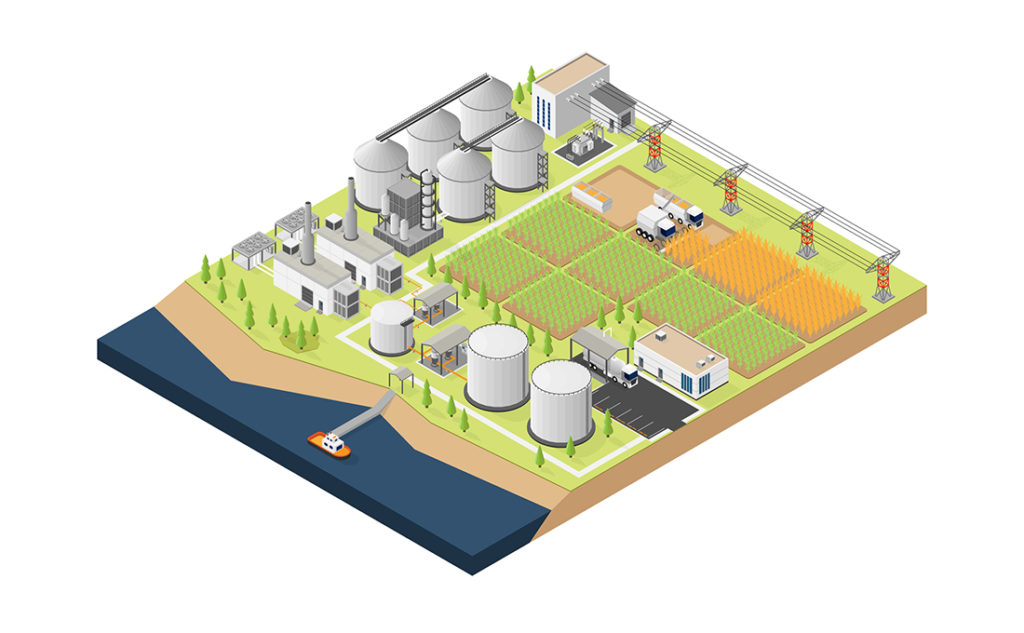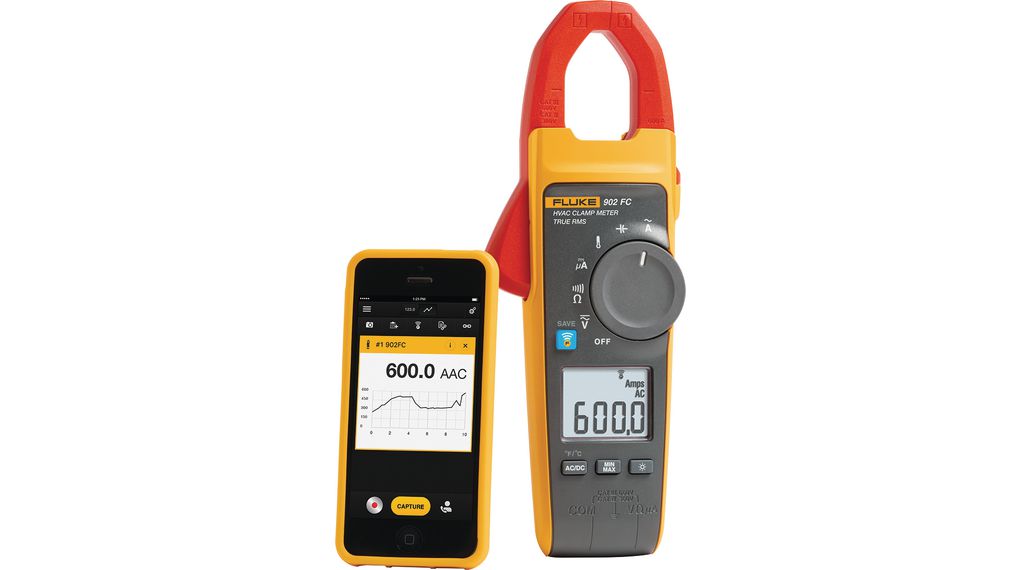Oil and gas are the most important and largest sectors in the global economy, especially for main producers like the United States, Russia, Saudi Arabia and China. Unfortunately, some of the events in the international arena are putting the sector in danger.
The Russian invasion of Ukraine creates uncertainty for the gas industry in Europe and Asia. It already brought price increases and concerns about the natural gas markets. With plans in Europe to ban all purchases of Russian oil, stopping Russian gas imports is still a work in progress among EU nations, as reported by BBC News.
According to the International Energy Agency (IEA), to meet Net Zero Scenario levels by 2050, existing gas-fired power plants will increasingly need to be modified with CCUS (Carbon, capture, utilisation and storage) or co-fired with low-carbon fuels like hydrogen. To change the energy economy, investors and companies that want to enter the market have to look for solutions to decarbonise the world with the right tools and strategies.
The role of gas in a green economy
Clearly, gas and oil play a key role in the energy transition and other renewable energy sources. The shift towards climate neutrality and moving away from coal is bringing to the front natural gas and LNG (Liquefied Natural Gas). Thus, there is pressure on gas and oil producers to adapt to the changes and pursue decarbonisation targets from both policymakers and investors. Also, the supply crisis and price increase has contributed to the difficulty of transitioning to more sustainable solutions.
The use of gas and oil in transportation created and will continue to create petrochemical demand. As per IEA, petrochemicals now account for 14% of global oil demand and 8% of global gas demand.
According to McKinsey, the global fossil-fuel demand will peak between 2023-2025; oil is projected to peak in 5 years, while gas will remain the most resilient fossil fuel.

To achieve more ambitious targets of 30–50-percent reduction of emissions intensity—or more— operators will need to invest in shifting energy consumption, typically to electrification of operations linked with renewable generation or, in some cases, the use of biofuels/biomass.
Atlantic Council, Leading Oil and Gas into a Net-Zero World
Low-carbon technologies for heating
Despite the obstacles, incorporating new low-carbon technologies is crucial to reduce CO2 emissions or to reach a net-zero carbon footprint. Alternatives for heating exist, and oil and gas industries should focus on these technologies.
New technologies used to heat buildings and houses:
- Biomass heating
- Efficient gas boilers
- Solar water heating
- Wind turbines
- Air source heat pumps
- Photovoltaics (PV)
- CHP – Combined heat and power
Clamp meters
The alternatives are vital to creating more sustainable environments. A substitute for heating buildings is, for example, efficient gas boilers. ‘Eco-friendly’ boilers still supply households with central heating and warm water, but they produce low or no emissions in manufacturing and operation.

The clamp meters provide measurement for HVAC boiler systems, among others. With the Fluke Connect, you can connect your meter and capture measurements wirelessly. It is a perfect instrument for HVAC technicians, available from our Distrelec webshop.
Cable glands
Under the extreme conditions in the oil and gas industry, cable and wire products provide stable network performance and energy transfer. Cable glands are essential to protect the environment, especially in harsh areas. Read more about cable management here.

Discover cable glands from Atex in different sizes, colours, shapes available from Distrelec.
The digitalisation of the oil and gas industry
Exploration, production, transportation, storage, refining, and distribution are all issues in the oil and gas sector. Consequently, technologies such as clean hydrogen, solar power, utilisation, and storage development are important in the transition. However, the shift is also possible with the right machinery, instruments and tools.
Nevertheless, on top of investing in reserves and renewable energy sources, people can improve their plants by concentrating on digitalisation. The digitalisation of oil and gas industries means that equipment like process instruments, gas analysers, and motors can send and receive data, boosting plant transparency and providing operators with vital insights in order to make well-informed decisions.
A transformation of the gas and oil industries is possible with the right solutions, instrumentation and tools, such as cloud-based applications, cybersecurity, and operation optimisation.
Real-time operation optimisation
Monitoring the manufacturing process in real-time is possible with integrated well-to-facilities oil field production optimisation. Multi-site gas network optimisation enables management, analytics, and visualisation solutions that are all integrated. And LNG operations optimisation allows for reduced emissions and energy consumption.
Programmable Logic Controllers
Undoubtedly, a very useful equipment is the programmable logic controllers (PLC) with simple monitoring and control even via text messages. A PLC is an oil and gas control system that consists of analogue and digital input and output, as well as a power supply and processing module. Process control systems, power supplies, and controllers are all automated. Read more about PLCs and their role in the Industrial Internet of Things.

Energy monitoring (electrical metres, energy metres, and power metres with monitoring software) provides the data you need to make informed, proactive decisions that minimise operational expenses and improve the performance of your facility. People today understand the importance of lowering energy consumption and becoming a more sustainable business. Therefore, safe and reliable power meters enable complete power monitoring.
Energy Meters
An electrical meter, often known as an energy meter, is a device that measures the entire amount of energy used by a piece of electrically powered equipment, a tenant area, or a structure. Utilities use electric metres to measure the exact quantity of power delivered to customers, which helps speed up the billing process. Some advantages of using quality electrical metres include reduced factor and demand penalties, thorough forensics power quality monitoring, and increased energy efficiency.
Energy Meters, PowerLogic, Schneider Electric

Energy Meters, SENTRON, Siemens

Softwares & Platforms
Plant engineering software and simulation platforms monitor and visualise multiple drive systems’ status, display trends and error alerts, and provide reports. In oil and gas companies, software assists with exploration and well data management to machinery and terminal management.
EcoStruxure Power is one platform that digitises and simplifies electrical distribution systems. With cyber-resilient, connected power distribution solutions, facility operations personnel receive actionable data to enhance their decisions that help protect people, secure assets, and maximise business continuity and performance.
Watch the video to find out how Schneider Electric IoT system architecture, such as the EcoStruxure platform, connects almost everything in the enterprise.
Test & measurement in oil and gas industries
Testing and measurement of gas and oil are carried out for various purposes. Instruments, such as gas detectors or gas analysers, are important for detecting the presence of gases in areas and identifying potential gas leaks. Distrelec supplies a wide variety of sensing detectors.
Gas Analysers & Leak Detectors
Gas detectors are excellent for detecting the source of a leak, with some versions capable of tracing leaks in invisible or encased pipework. The features required, such as alert types, sensor, and calibration criteria, will determine the level of the gas leak detector.
The trend display indicates the most significant leaks and aids in leak detection. Leak detectors are quick and accurate leakage tests. All common refrigerants are detected. The system is constantly checked and displays any defects or issues. Some of the gas detectors can quickly identify and pinpoint gas leaks.
Refigerant Leak Detectors, Testo

Combustible Gas Detector, Extech Instruments

Thermal Imaging
Fixed thermal imaging allows users to identify dangerous hot spots in coal and biomass. Thermal imagers enable continuous biomass monitoring. With IIoT early fire detection in interfered cameras, users can prevent conditions that lead to a fire or other serious issues. Gas imaging cameras are highly specialised thermal cameras filtered to visualise specific gas emissions.
Thermal Imager, Hikimicro

Thermal Imager, FLIR

Thermal Imager, Fluke

Frequently Asked Questions
Carbon neutrality implies that verified carbon offset initiatives offset the emissions produced by using natural gas to heat your home. Carbon-neutral fuel has no net greenhouse gas emissions and no carbon footprint.
Natural gas stands out as a transition fuel because it is more cost-effective than emerging renewable technologies and has lower pollution levels than other fossil fuels.
Technologies help speed up the transition, but some countries are still behind. According to the World Economic Forum, the world can achieve net-zero emissions by 2050, but only through significant changes. If people are to keep global warming to 1.5 degrees Celsius above pre-industrial levels, they must ensure that there is no contribution of more CO2 to the atmosphere than is removed. Experts believe that if this is done, major heat waves, droughts, and floods will be less likely by the end of the century.
Natural gas is a fossil fuel, but its global warming emissions are substantially lower than those from coal or oil combustion. According to the Union of Concerned Scientists, when combusted in a modern, efficient natural gas power plant, natural gas produces 50% to 60% less carbon dioxide (CO2) than emissions from a typical new coal plant.
The current world situation – first, the pandemic and later lack of additional supplies coming from Russia – contributed to increased gas and electricity prices. Also, retail gas stations pass these higher prices to customers, and they often have little competitive incentive to lower prices too fast even if the price of oil drops. However, there are predictions that the high fuel price might go down as the electric vehicles continue to grow.
As per World Economic Forum data from April this year, Russia exports 2.85 million barrels per day of petroleum products, including 1.1 million barrels of gas oil, 650,000 barrels of fuel oil, and half a million barrels per day of naphtha, and 280,000 barrels per day of vacuum gas oil.
Governments across the globe are putting in place new legislation such as bans for gas and oil boilers from being heated by low-carbon alternatives. The implementation of such changes are planned to start in 2025.
According to several estimations (American Petroleum Institute from 1999 and Cambridge Energy Research Associates in 2006), it seems like we will not run out of fuel in our lifetimes. But if we do not act, our grandchildren might face this problem.
Some countries are putting in place bans for gas boilers by 2025. But it is hard to predict when exactly (and if) people will stop using the source. As the reality continues to change , it might end at some point (maybe not yet in this century, but eventually). Investing in new low-carbon technologies can help, as the alternatives are crucial to creating more sustainable environments.
Petrochemicals are a group of chemical compounds from fossil fuels like natural gas and petroleum. They are used to manufacture thousands of products that people use every day, including clothes, plastic, medicine, cosmetics, furniture, electronics, but they are also needed to manufacture wind turbines, solar panels and part of electric vehicles.











